The meat was an essential part of Victorians’ meals, and they didn’t waste even a single piece of meat. The meat was divided in terms of cuts and their tenderness. The upper classes bought fresh and large feasting joints; for their meals, bones were bought to flavors soups. Less meaty and fewer tender cuts were sold to the poor, including salted fat for nutrition. There are even stories of the blood being sold by the pint for drinking – supposedly good for combating Tuberculosis. People used to buy meat daily due to a lack of refrigeration. Some butchers used salt to preserve and helped to take pieces of meat fresh for longer during warmer times. At the end of the 19th century, ice blocks were used to preserve meat. These ice blocks were delivered daily in horse-drawn carts. Animals were taken from rural areas to cities and markets, where they were slaughtered on the spot and sold. Animals and birds were hung up outside the butcher shops, arranged by categories and size. Some butchers slaughtered hundreds and even thousands of animals at once and hung outside the shops, as you can see in the photos below.


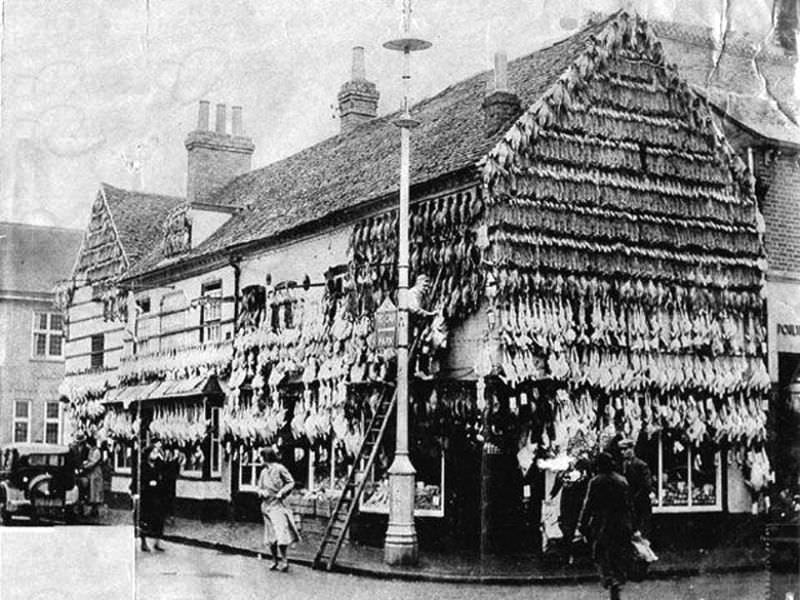
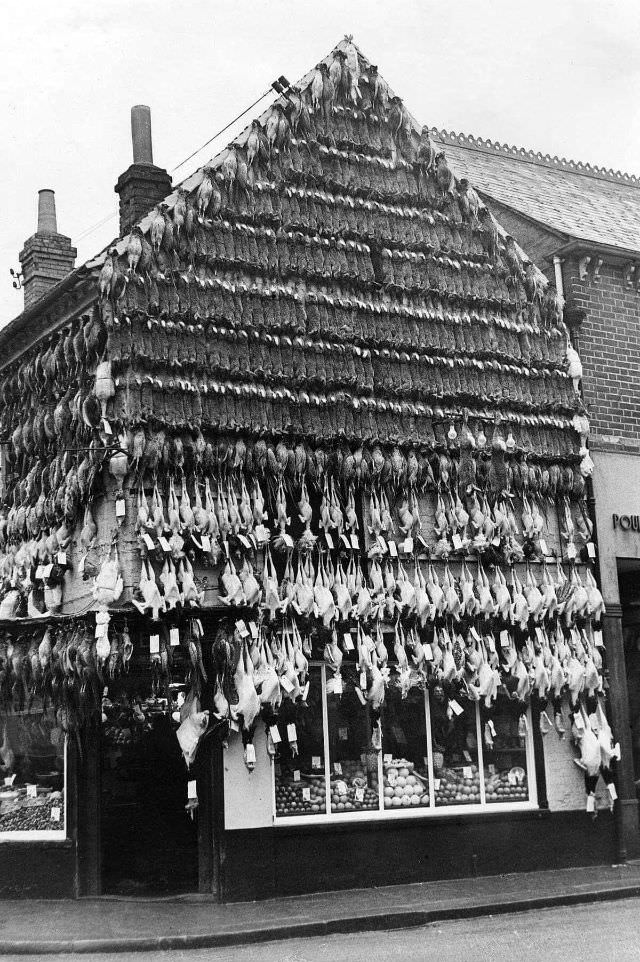
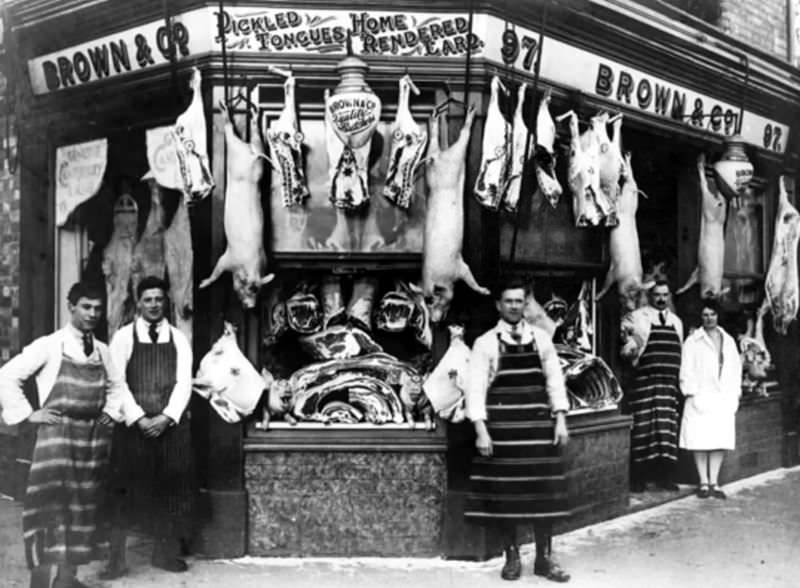
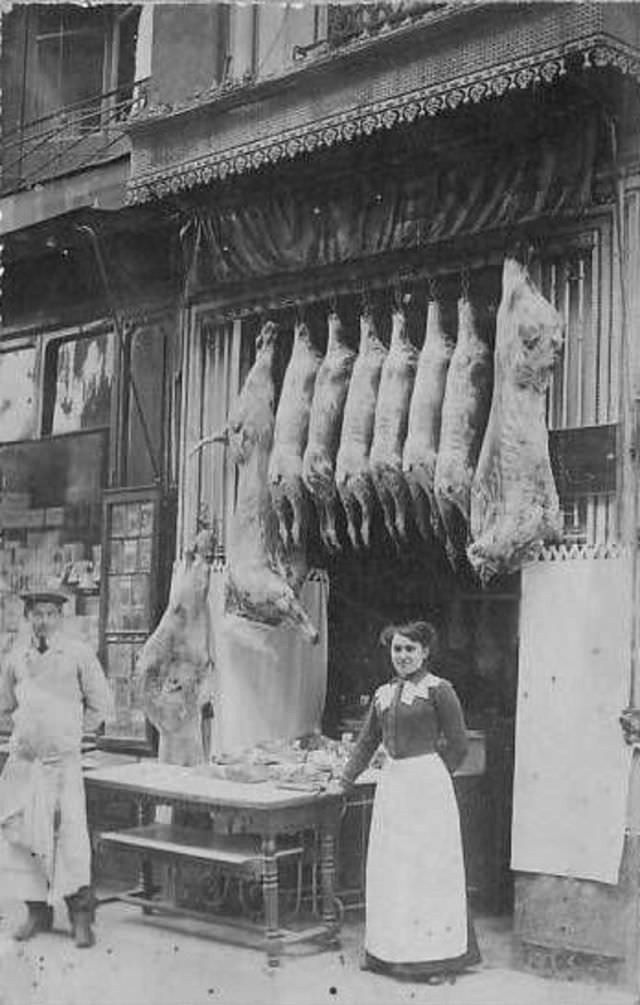
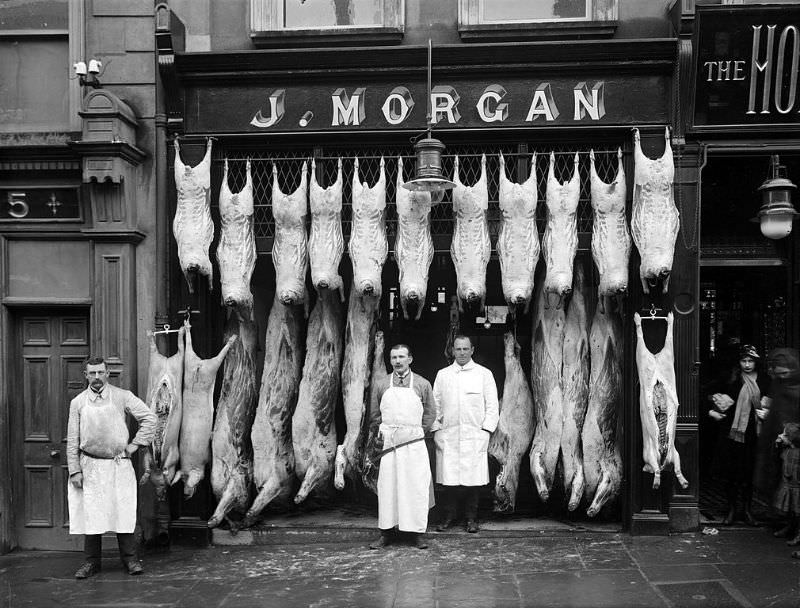
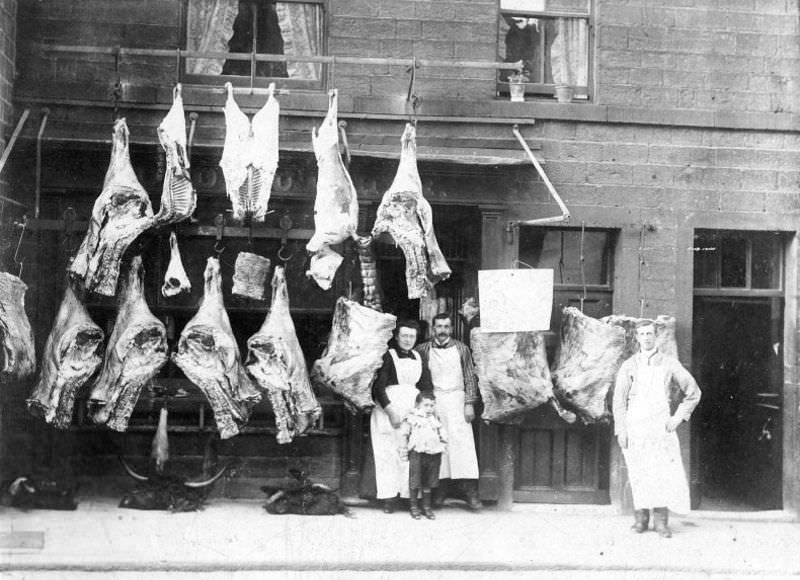
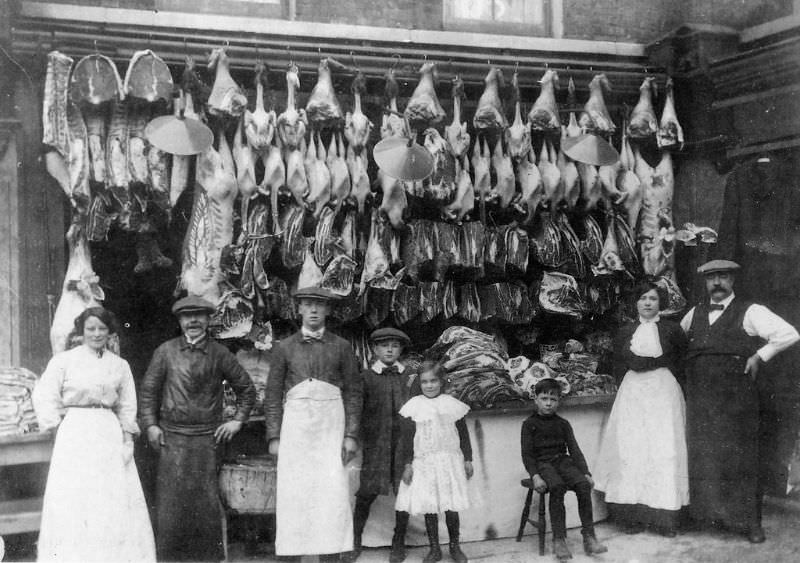
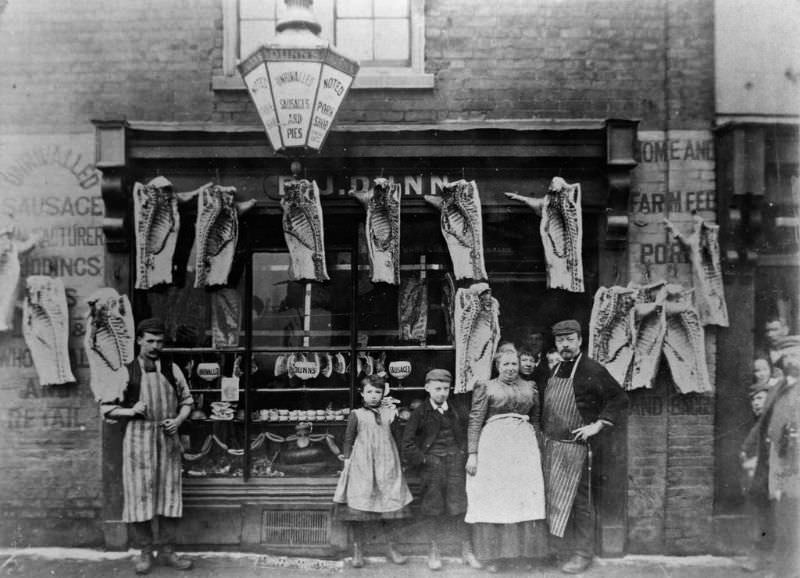
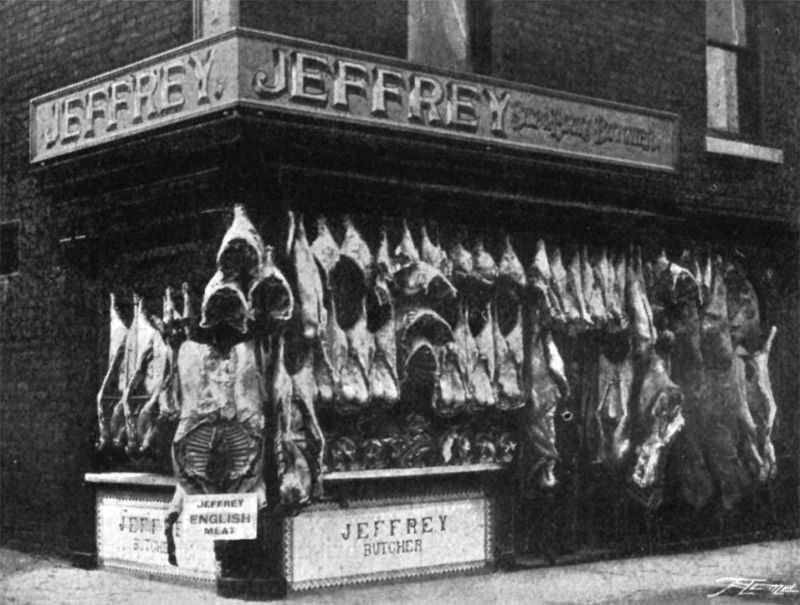
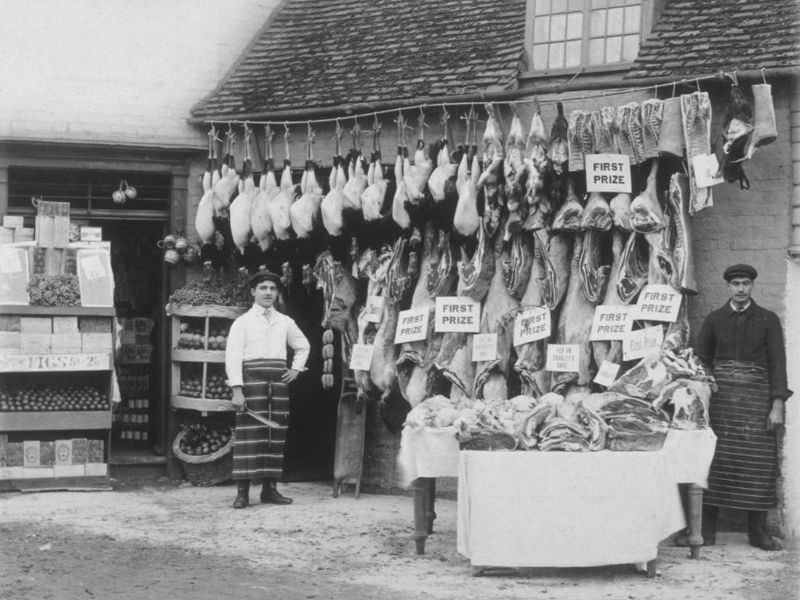
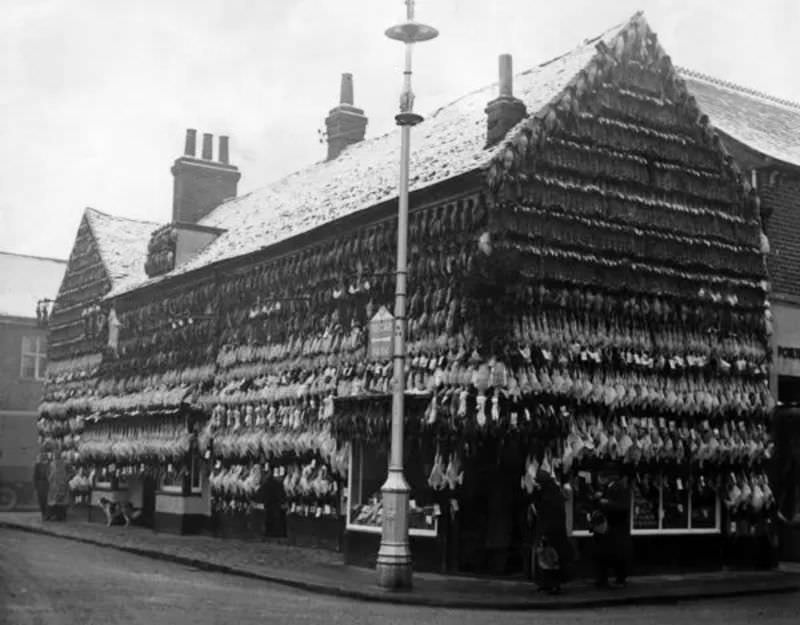
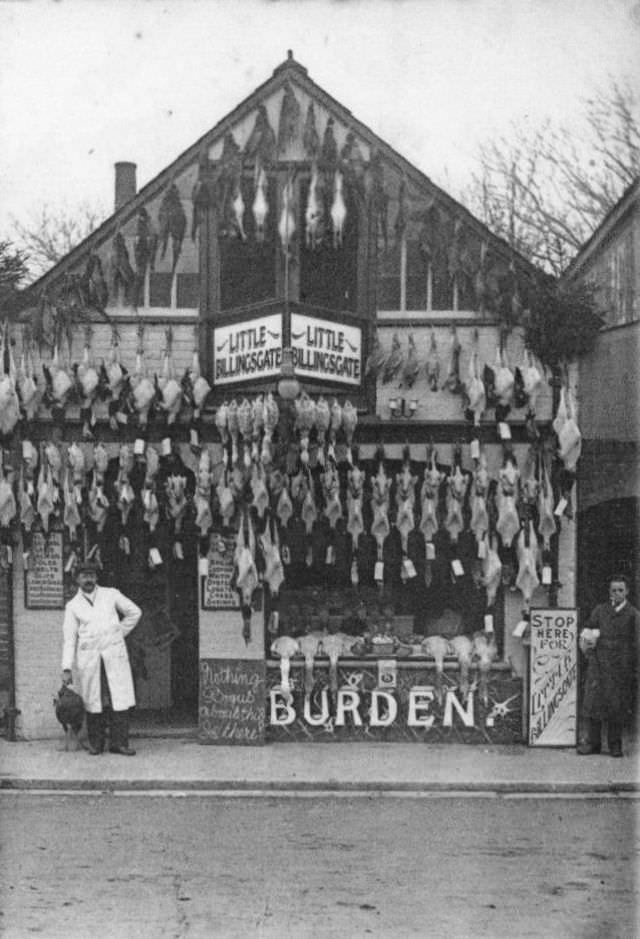
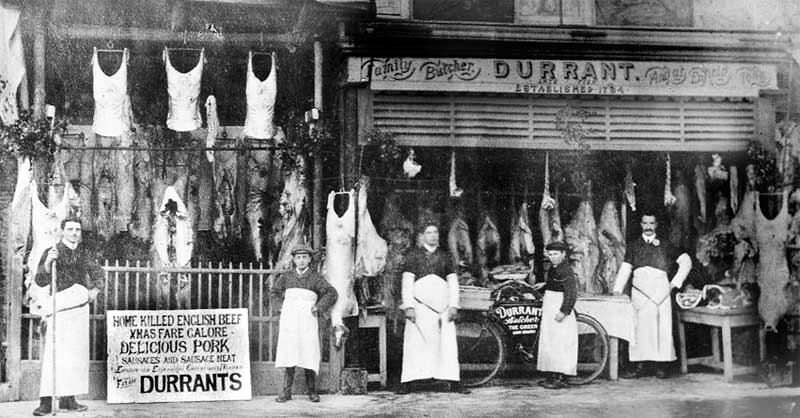
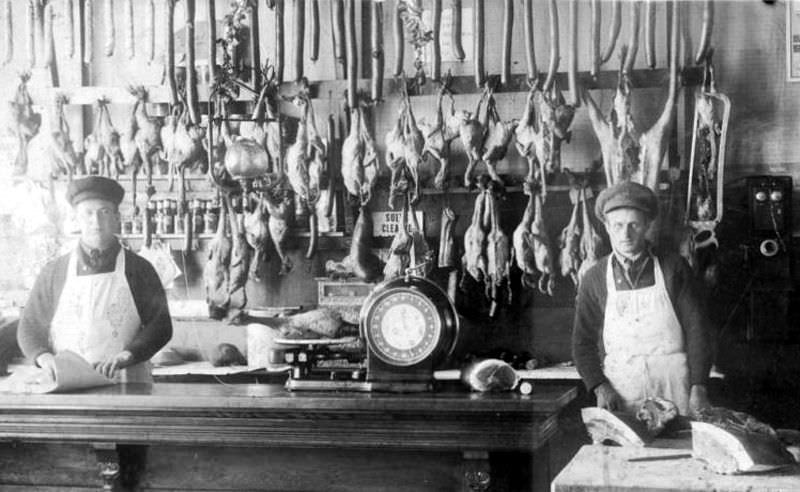
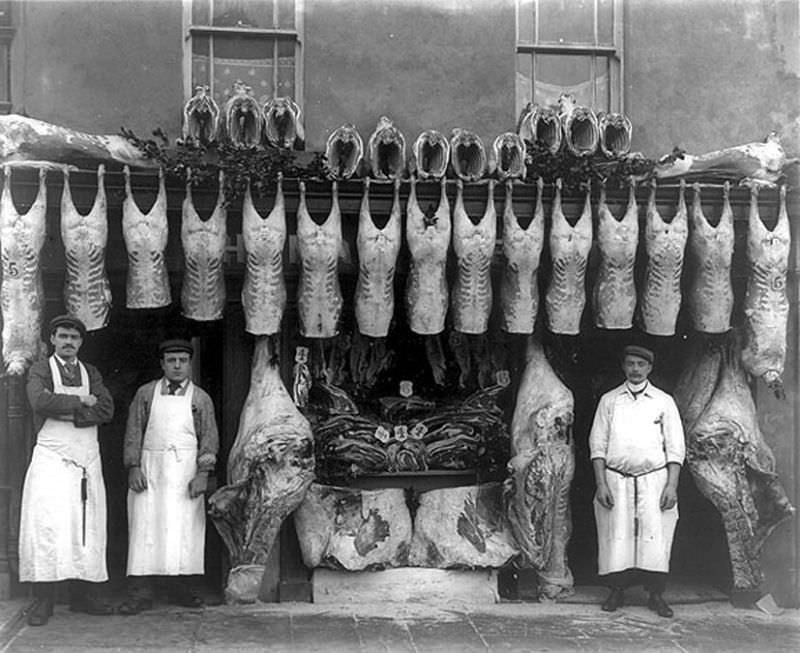
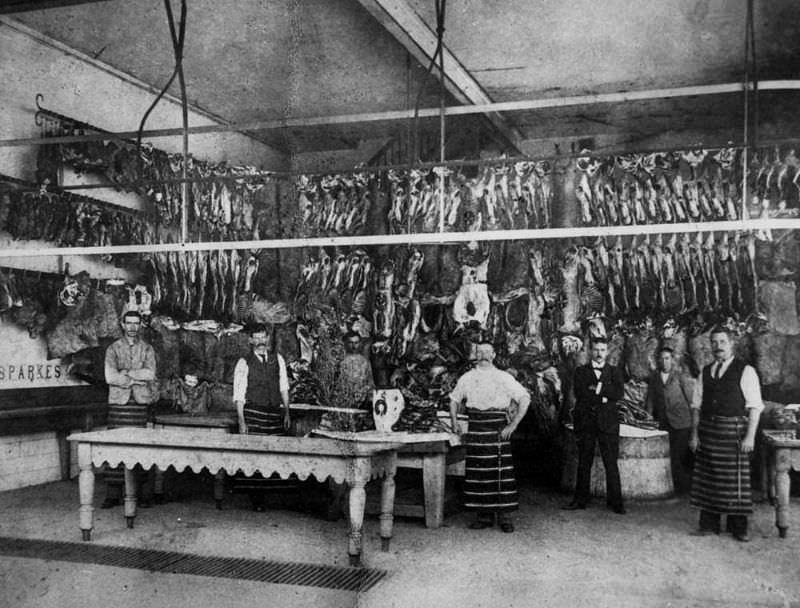
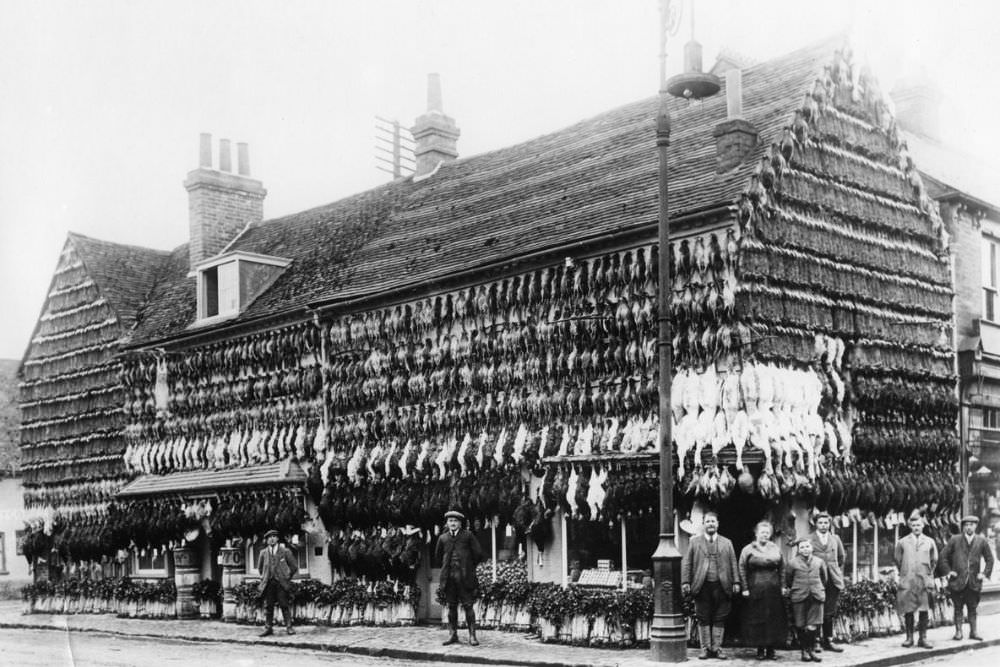

My local butcher still has the rails in place to do this. They can be seen in this photo. Also, in the picture notice the use of scumble paint. The world’s only two coloured paint. It his painted upon a surface then combs are used to imitate woodgrain.
I have never heard of scumble paint! I worked on set crews a lot and did a ton of painting fake wood grain. Thank you for the learning tid bit!
Delicious
Is this wintertime? How are there not a jillion flies eating everything in sight?
Oh trust me there was.
For sure. Winters were reliable for refrigeration (especially when you’re lacking modern refrigeration techniques) and would’ve been taken advantage of instead of having to use a cool cellar.
I mean, you’re not meant to but it still happens today. you really think your dry hung turkey’s been sat in your tiny butcher’s tiny fridge with 150 other Turkey boxes AND everything else they’ve got in the shop when you collect it on the 24th? Each night they’ll play Tetris to get it in there but if it’s below 5 degrees that shit is coming out the next day and it won’t go back into a fridge until it’s in the customer’s home.